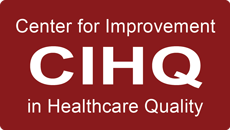
Critical value reporting is a process to determine which tests and diagnostic procedures are deemed critical and require prompt notification to the healthcare provider responsible for the care of the patient. Timely reporting of critical values is vital to prevent delays in diagnosis and treatment that could result in an adverse outcome for a patient. All accrediting organizations have standards around the timely reporting of critical values.
Organizations should have policies/procedures around the management of critical values. What should your policy say? There are several key components of your Critical Value Reporting policy that a surveyor will evaluate.
- The definition of critical tests and diagnostic procedures.
- Which tests including diagnostic procedures have been identified as critical. This can be listed in an Appendix within the policy.
- Identify who should receive the results.
- Identify who should receive the results when the ordering provider is not available.
- Identify how to reach the provider (for example: during normal business hours, after hours, weekends and holidays).
- What the acceptable length of time in which the critical results are reported. Establish specific time frames for this process, including the time the laboratory or radiology department reports the value to the unit and the time from the unit to the provider.
- Established a shared policy for consistency and communication for all types of critical results (example: laboratory, radiology, and other diagnostic tests) and include standardized “readback” techniques.
- Identify a system to address critical values during transition of care situations (for example: transfer to another unit, discharge, etc.).
- Identify who is allowed to receive a critical value and who can report those to the responsible provider
- Steps staff members should take when reporting critical results. For example:
- Identify themselves
- State the critical result and report the value
- Give patient name, and date of birth
- Complete a read back verification process
- Document the reporting of the call of the critical result in the patient medical record
- The critical result
- Whom it was reported to and a read back acknowledgement of the person and credentials.
- Date and time
Organizations should implement procedures for the management of critical tests and incorporate an evaluation of compliance through the Quality Assessment and Process Improvement (QAPI) program. An effective evaluation of the process can assist your organization in identification of current patterns of communication regarding reporting of critical test results. This will also be helpful in identifying if delays in critical test reporting have contributed to a negative patient outcome. A successful process, and compliance with organizational policies for critical value reporting requires engagement with key stakeholders across the organization. Assuring that critical values are reported timely and addressed by the provider will help ensure that life-threatening needs of patients are communicated so actions can be instituted immediately.
References:
Centers for Improvement in Healthcare Quality Standards Manual (2022). QS-8, Critical Test Results
Health System Risk Management. (2004). Critical Test Value Reporting: Audit Current Processes to Initiate Improvement. (Available from ecri.org)
Centers for Improvement in Healthcare Quality Standards Manual (2022). QS-8, Critical Test Results
Health System Risk Management. (2004). Critical Test Value Reporting: Audit Current Processes to Initiate Improvement. (Available from ecri.org)
